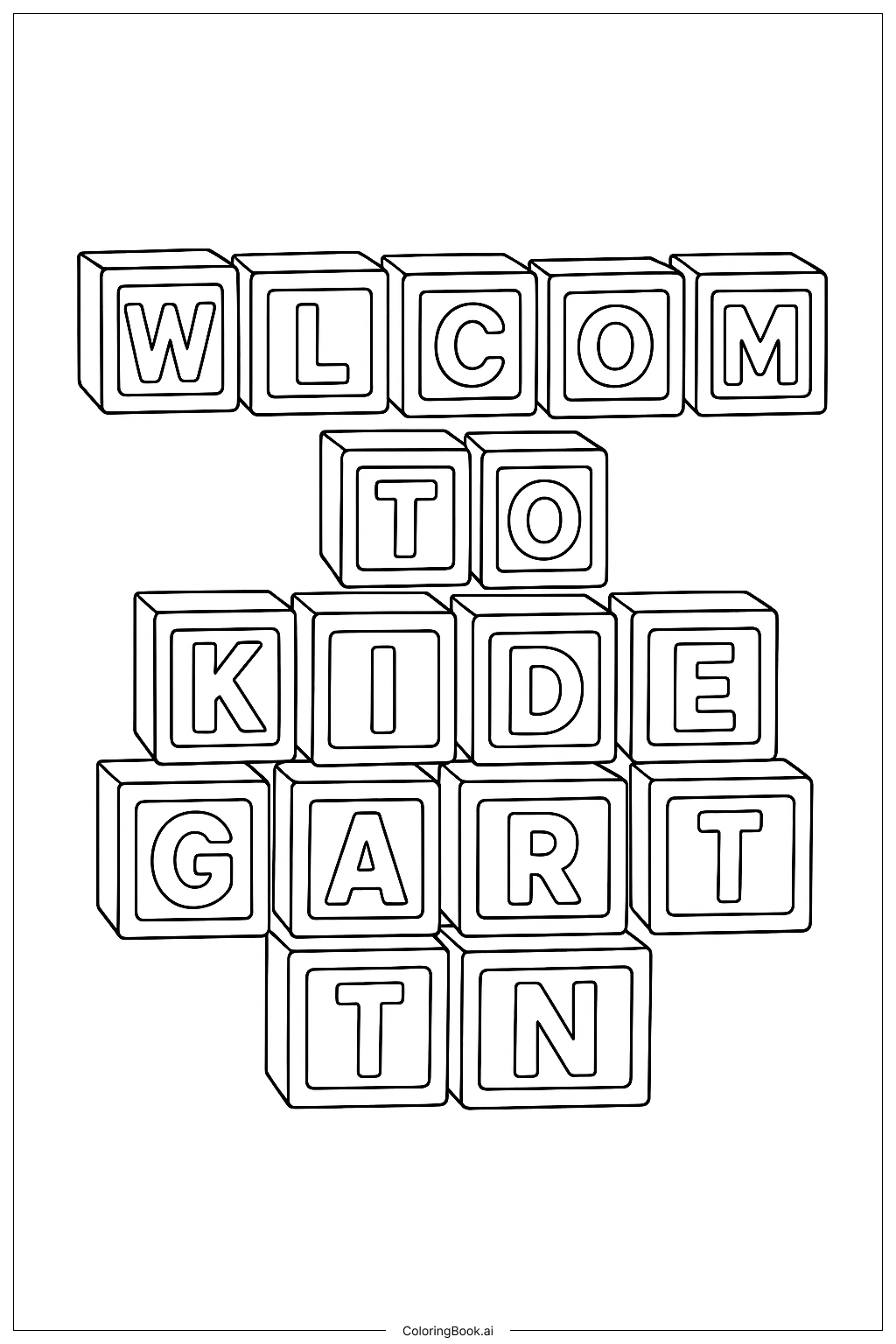Coloring tips: How to color Building Blocks Welcome To Kindergarten coloring page well?
Use bright and varied colors for each block to make the image lively and appealing. Consider coloring each letter in a different color to help highlight the individual letters and make learning easier. You can use primary colors like red, blue, and yellow, as well as secondary colors like green, orange, and purple. Adding shading on the sides of the blocks can create a 3D effect. For the background, use a light or pastel color to keep the focus on the colorful blocks.
Coloring challenges: Which parts are difficult to color and need attention for Building Blocks Welcome To Kindergarten coloring page?
1. Coloring the sides of the blocks evenly can be tricky, as the 3D effect requires careful shading and color blending.
2. Staying within the lines on the small letter shapes might be challenging for younger children.
3. Choosing contrasting colors for the letters and blocks to make the letters stand out clearly can be difficult.
4. Balancing colors so that the overall page does not become too busy or overwhelming requires attention.
5. Coloring the gaps between blocks neatly without mixing colors can require fine motor skills and patience.
Benefits of coloring books: Advantages of drawing Building Blocks Welcome To Kindergarten coloring page
Coloring this image helps children practice letter recognition and spelling in a fun way. It encourages creativity as kids choose colors and experiment with shading. The task improves fine motor skills and hand-eye coordination by staying inside the lines and carefully coloring small details. Coloring the blocks also helps children focus and build patience, preparing them for more detailed projects. Finally, this activity makes the idea of starting kindergarten exciting and less intimidating by associating it with play and creativity.
